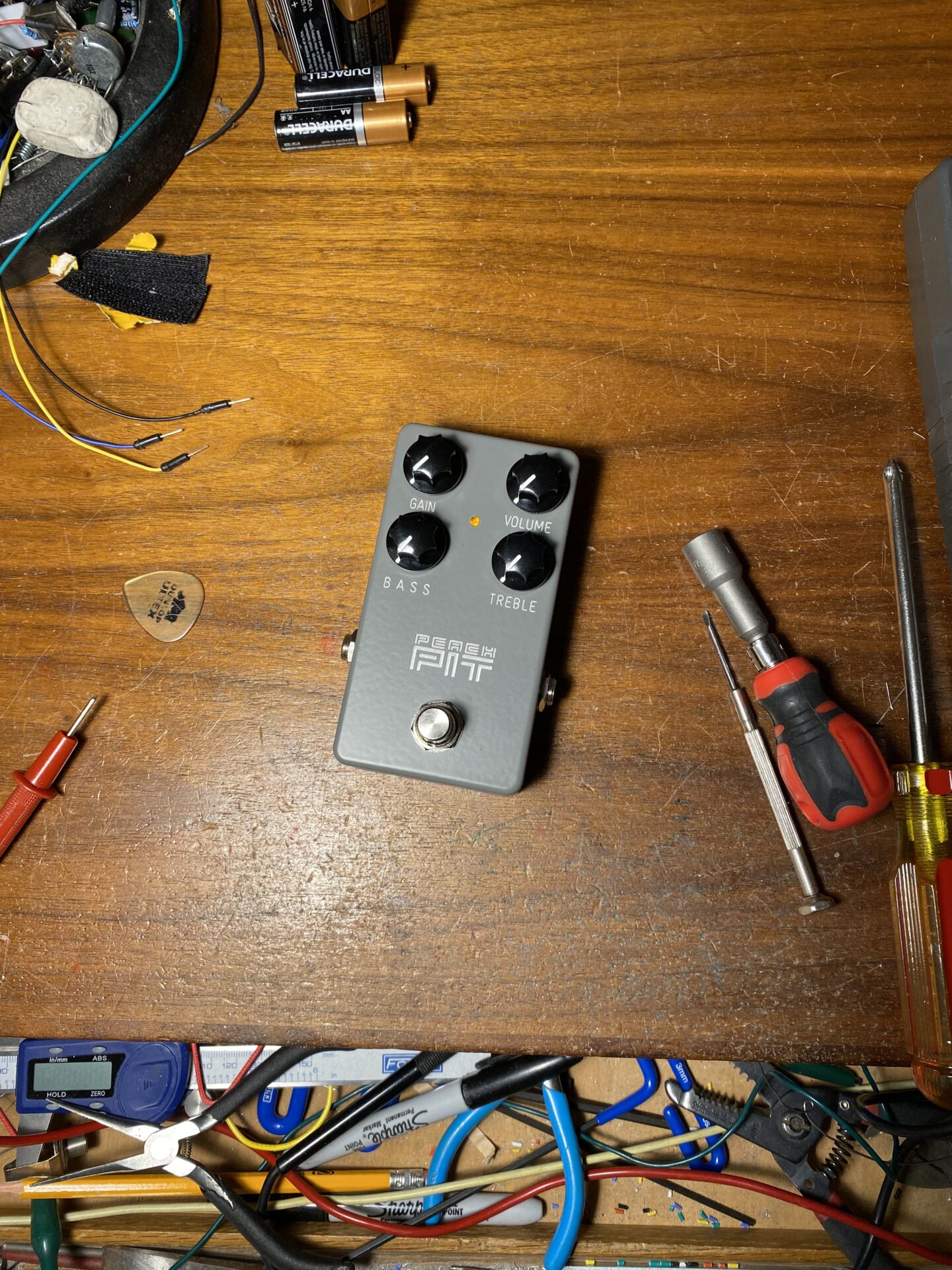This is my take on the Frantone Peach Fuzz. Peach Fuzz is an op-amp buffer into a pair of LM386 in series, followed by a tone control similar to the Big Muff. It uses a dual op-amp but only one of the op-amps is used. Frantone was one of the early “boutique” small name builders.
The Peach Fuzz uses only half of the dual op-amp. I decided to make use of the extra op-amp as an output buffer. I also changed the tone stack from a single tone control to a two band tone stack similar to what was used in old Orange amps.
I drew the schematic in Eagle and layered a PCB design and had some boards made at PCBWay.com.

It’s a lot like the Beavis Tufnell, but with an input buffer. The gain controls are omitted but the first stage is driven by the input buffer. I added an option to change the gain of the two 386 stages, read on! Not sure when Beavis did the Tufnell, I’ll guess around 2010. Frantone started in 1994! Truly one of the earliest boutique pedal makers!
This is schematic I created:

This is also similar to the Earthquaker Acapulco Gold which is two LM386 in series, like the Tufnell but without the two gain controls. Here is a link to the schematic. Notice this like the Tufnell with the first stage at max gain.
Take a look at this post to see how to implement gain boost with he LM386.
The LM386 is a great amp for DIY pedal making it’s easy to work. With. The Peach Fuzz uses two amps setup with default gain of 20. The 386 has a nice over/distorted sound when driven. Gain of 20 is a lot but the 386 can be boosted to a gain of 200 easily. For experimentation I added a pad on pin 1 and pin 8 of both 386s. You could add a jumper to boost one or both stages, add a switch between one or booth for a boost, or add a 1K pot too. Adjust the boost. If you found a gain value you liked you put a fixed resistor in also.
Look carefully along the top edge. I added a pads that connect to pin 1 and pin 8 of the two LM386. These make it easy to experiment by adding a wire, a resistor, or pot to implement a some gain mods.

I made a couple mistakes with this build. I swapped the Volume and Gain labels. I also forgot to invoke the power pins on the op-amp. Not hard to fix when I figure it out. I ran a couple jumpers to pin 1 and 8 of the dual op-amp IC3.

The 386 app notes show the addition of a resistor and capacitor from pin 5 to ground. This is Zobel network. It’s there to prevent oscillation. The original Peach Fuzz, Tufnell, and Acapulco Gold all omit this. Almost every project I’ve seen using the 386 omits these parts. I put them into my schematic, and added them to this build. I figured if they were needed there could be a spot on the PCB for them. The app notes suggest that the parts are needed or at least best practice.
The Nobel network is C7 and R8 on IC1 and R10 and C11 on IC2.

Here are some pictures from the build.









Conclusions
The jury is still out on how this sounds. It sounds like a distortion/fuzz but I haven’t played it enough to say if I like it more or less than other distortion fuzz circuits.
I do like the part choices. There is nothing here that is hard to get. Anyone could build this and you could get the parts almost anywhere. The LM386 was available at Radio Shack back in the day!

Leave a Reply